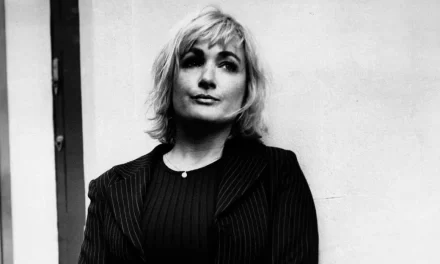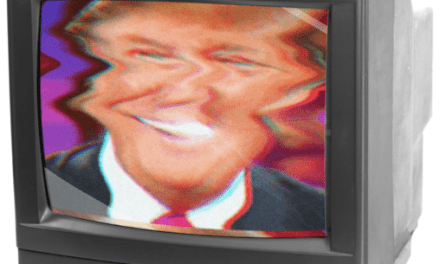Premiering in May 2015, Sam Esmail’s Mr. Robot (USA Network), tells the story of a cybersecurity engineer/computer hacker, who is recruited by a cyber-anarchist movement called ‘fsociety’. The movement’s mission: to eradicate all consumer debt through destroying the data records held by the fictional conglomerate, ‘E Corp’.
Over the course of the series, we follow the show’s protagonist, Elliot Alderson (Rami Malek), who, as we learn, suffers from severe social anxiety, depression and morphine addition. These revelations follow the first episode, where Elliot’s decision to join fsociety is aided by a mysterious individual who goes by the name of ‘Mr. Robot’ (Christian Slater). As season 1 progresses, we realise that Elliot is not the most reliable of narrators. It is later revealed that Mr. Robot is a persona that Elliot has created in the image of his dead father. As a consequence, it becomes apparent that Elliot suffers from a dissociative identity disorder.
Following its finale in December 2019, the series has been lauded with critical acclaim which has commended its unique on-screen depiction of ‘cyber-activism’ as well as its various nods to the tumultuous political and social movements that framed the 2010-2019 decade (Framke and D’Addario, 2019; Garland, 2019). Through a combination of Esmail’s enigmatic plot-twists and eclectic directorial style – numerous key scenes serve as a homage to Tarantino; Scorsese; Fincher; and, Hitchcock – the series lays bare the frustrations which underscored the decade’s emerging political antagonisms, such as, the 2010 ‘Arab Spring’ as well as the various ‘Occupy’ protests, beginning in 2011. The relative ‘success’ of these movements is echoed in the series’ anti-capitalist agenda, and the subsequent impacts of a well-prepared and deftly administered computer ‘hack’ that, from its premise, seeks to level the world’s richest conglomerate and its associated 1%.
In view of the series’ conclusion and its associated criticisms, I will, over forthcoming weeks, explore the formal significance of Mr. Robot and its relation to a range of cinematic and television narratives that seek to comment upon our current social, economic and political malaise. While this opening piece will pay homage to the series’ various influences – indeed, for those who have not seen the series, I hope that this provides some wider clarification on the underlying aims and purposes that frame Mr. Robot – later posts shall focus on the following.
Part One, will provide an examination of notable critiques of the series, and, specifically, its failure to offer a considered account of the ‘day after the revolution’ (Bolea, 2015; Flisfeder, 2018). These critiques will focus mainly on seasons 1 and 2, while also drawing attention to wider problems with the anti-capitalism that it professes. These problems undoubtedly echo the conclusions made in Mark Fisher’s ‘Capitalist Realism’ (2009) – primarily, the failure for us to think beyond the limits of capitalism itself.
Part Two, will offer a considered appraisal of a notable scene from season 4, episode 10, ‘410 Gone’. By way of introducing the series’ theoretical significance, this piece will critically examine the dialectical relation between content and form, and how such a relation poses wider reflections on the series’ conclusion.
Following the analysis presented in Part Two, Part Three will offer a final account of the series’ conclusion. This will draw primarily from Jacques Lacan’s psychoanalysis, and its application to film theory. Explicitly, I will seek to apply Todd McGowan’s analysis of desire and fantasy as detailed in, ‘The Real Gaze: Film Theory After Lacan’ (2007). Importantly, this account will articulate how the relation between desire and fantasy can allow us to examine the significance of the ‘gaze’ and its usefulness in underscoring analyses of television. In doing so, this final piece will afford a considered – and political – appraisal of the series; one that echoes recent critical discussions of Joker (Todd Phillips, 2019 see also Zizek, 2019).
In what remains of this introduction, I will, briefly, offer some wider reflections on the series’ cinematic influences as well as introduce the significance of McGowan’s (2007) ‘gaze’, as it pertains to critiques of television.
‘Where is my mind?’…
The unreliability of Elliot’s narrative pays homage to similar formats that have been employed in David Fincher’s Fight Club (1999) as well as American Psycho (Mary Harron, 2000), Taxi Driver (Martin Scorsese, 1976) and The Matrix trilogy (The Wachowski’s, 1999-2003). In fact, as portrayed in Fight Club, we see Elliot’s dissociative identity disorder mimicking relationship between The Narrator (Edward Norton) and Tyler Durden (Brad Pitt).
Indeed, we frequently see Elliot conversing and working with Mr. Robot, who, while portrayed by a separate actor – Christian Slater – remains a formative part of Elliot’s psyche. That is, the two inhabit the same body, so that when ‘we’ – the audience – observe Mr. Robot, characters on-screen are seeing ‘Elliot’ perform that persona. In addition, the series’ anti-capitalism oeuvre and the cyber-anarchism of the group ‘fsociety’, echo Fight Club’s ‘Project Mayhem’.
Elsewhere, the members of ‘fsociety’ don Mr. Monopoly masks, homage to the Guy Fawkes masks that were used in V for Vendetta (James McTeigue, 2005), and which subsequently became a symbol of the hacktivist group, ‘Anonymous’, as well as being worn by protestors involved in the ‘Occupy Movement’. Though locating itself within a genre of film – which seeks to dramatically and, at times, conceptually, re-think our liberal capitalist order – there are a number of ways in the series both succeeds as well as fails in eliciting these wider tensions.
While veering from the sense of social destruction, propagated by Fight Club, Mr. Robot offers an alternative path in exploring the antagonisms expressed through capital, the self and Western liberal democracy. Indeed, it is these tensions which will be consider further in Part One, where closer attention will be given to exploring notable criticisms of the series and its ‘dramatic’ failure to offer an alternative to capitalism (Flisfeder, 2018).
The Filmic/Television Gaze
As argued by Todd McGowan, early adoptions of Lacan’s work in film theory served to circulate a mis-conceived application of Lacan’s notion of the gaze. Evident in the work of Laura Mulvey (1975), such analyses centered on examining the ‘imaginary’ deception which takes place when one watches a film. In sum, these analyses placed attention on the mastery that the filmic text holds over the spectator.
In contrast, McGowan (2007) has proposed a conception of the gaze which correlates with Lacan’s later work on the Real. If we consider that our desire to follow a particular narrative is reflected in the desire that we have in seeking to solve the mystery that structures a film’s narrative, then it is apparent that the subject’s relation to the text on-screen is not one forged from an omnipotent position of understanding, but, rather, a relation marked by an inherent ‘gap’ within the film’s constructed form. As McGowan (2007) notes, ‘This gap within our look marks the point at which our desire manifests itself in what we see’ (2007: 6).
This manifestation redefines the subject’s spectatorial relationship. Specifically, the gaze does not belong to the subject as spectator, but to the film itself – to the way in which it seeks to account for as well as incorporate the subject in the narrative. To this end, it is the subject who encounters the gaze through a disruption that bears witness to their own spectatorship. While these disturbances allow us to enjoy the on-screen text, they also provide an important opportunity for the formal significance of the gaze to be considered.
We will return to the significance of the gaze in Parts Three and Four, with further explication given to the relationship between content and form as well as desire and fantasy.
Jack Black is a Senior Lecturer examining the interrelationships between sociology, media and communications and cultural studies. Drawing upon ‘traditional’ media forms (newspaper analysis) as well as television and film studies, Jack has examined a range of topics including nationalism/national identity; multiculturalism; and, collective memory. With particular attention afforded to the relationship between philosophy and critical social theory, this research expands upon the effects of ideology and power on culture and media representations.
References
Bolea, Stefan, “The Phantasm of Revolution from Fight Club to Mr. Robot.” Caietele Echinox 29. 2015: 314-321.
Fisher, Mark. Capitalist Realism: Is There No Alternative. (Ropley, UK: 0 Books). 2009.
Flisfeder, Matthew, “Mr. Robot: Season 1, and: Mr. Robot: Season 2 (review). Science Fiction Film and Television. 11.1. 2018: 143-147. doi: 10.3828/sfftv.2018.11
Framke, Caroline and D’Addario, Daniel, “The 25 Best TV Shows of the Decade.” Variety. 2019. https://variety.com/feature/best-shows-decade-2010-2019-tv-1203440398/
Garland, Emma, “‘Mr. Robot’ is the Defining Show of the 2010s.” Vice. December 20th 2019. https://vice.com/en_uk/article/y3mzew/mr-robot-is-the-defining-show-of-the-2010s
McGowan, Todd. The Real Gaze: Film Theory After Lacan. (New York, NY: State University of New York Press). 2007.
Mulvey, Laura. “Visual Pleasure and Narrative Cinema.” Screen. 16.3. 1975: 6-18. doi: 10.1093/screen/16.3.6
Zizek, Slavoj. “More on Joker: From Apolitical Nihilism to a New Left, or Why Trump is No Joker.” The Philosophical Salon. November 11th 2019. https://thephilosophicalsalon.com/more-on-joker-from-apolitical-nihilism-to-a-new-left-or-why-trump-is-no-joker/







